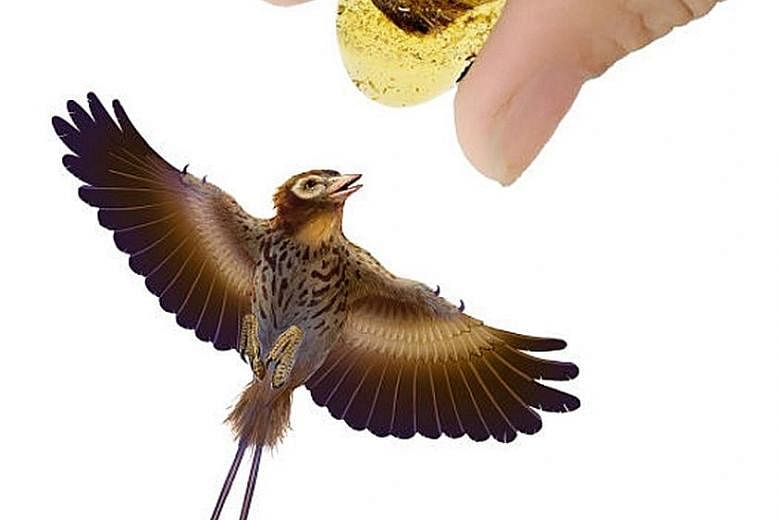Nearly 100 million years ago, two baby birds got trapped in the sticky sap of a tropical forest tree. Now, their wings, entombed in amber, are providing scientists fresh insights into the evolution of birds.
The tiny specimens, described in the Nature Communications journal, were found in the Hukawng Valley in northern Myanmar.
This is the first time that wings have been found encased in amber. Individual feathers or fragments of feathers are found quite frequently.
The samples contain two impeccably preserved wing tips with all features intact, including soft tissue, from two birds that scientists believe were hatched nearly 100 million years ago during the Cretaceous period - or about 45 million years after the first birds or avian dinosaurs evolved.
Each fragment is only a few centimetres in length and probably belonged to enantiornithines, a group of toothed birds.
The size and skeletal development of the wings suggest the birds were juveniles when they became trapped in sap, according to study co-author Xing Lida of the China University of Geosciences.


